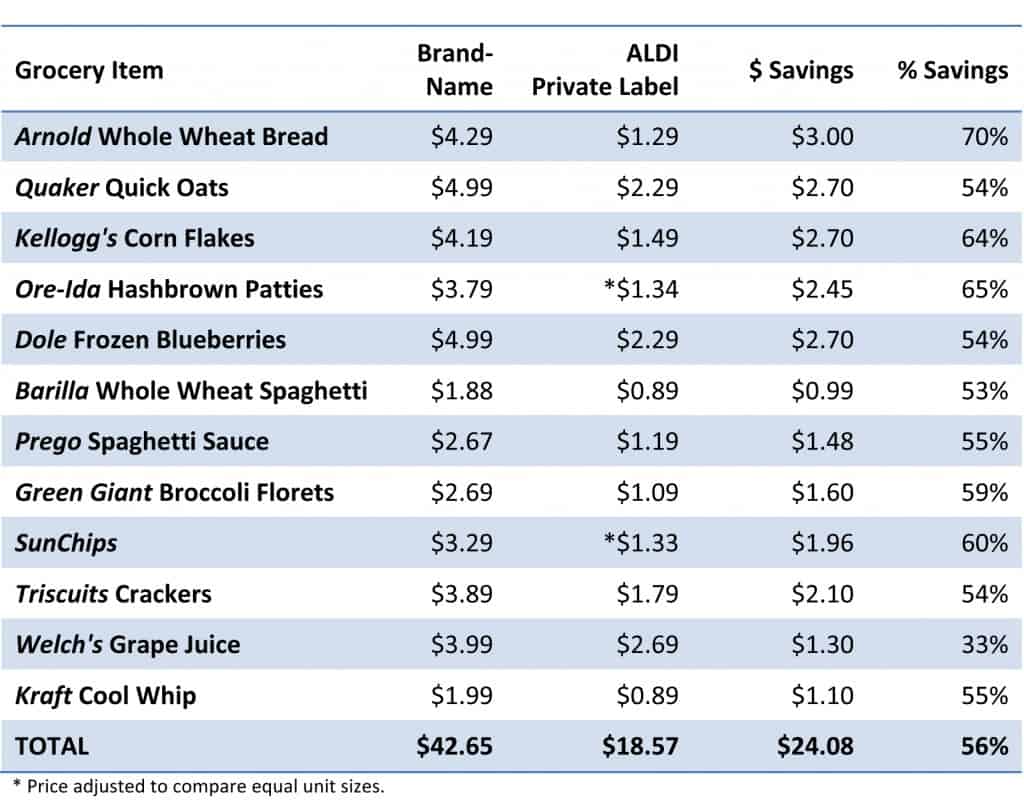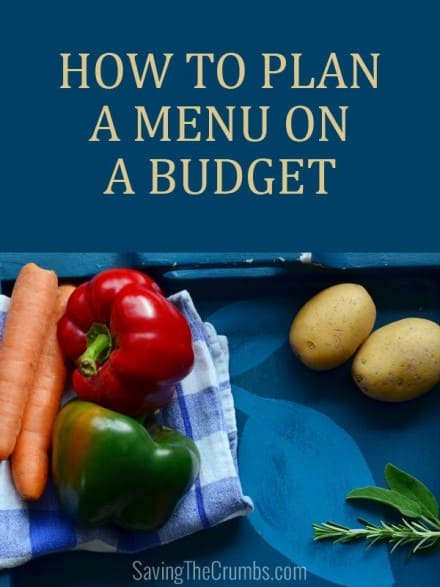Going shopping can be a little stressful, especially if you’re on a budget. That’s why, before we delve into what we actually buy, here are 3 strategies we use to help steer us in the right direction. Making sure that you do these first will prevent you from pulling out your hair trying to determine what to buy or pulling out your hair because you bought it!
We Plan:
1. Purchases around sales – Said another way, we don’t plan our purchases around predetermined, “what-do-I feel-like-eating-today” menus. If you do, it is likely you could end up buying items that are out of season and shamefully full-priced (or at least not a deal)! Instead, decide what you are going to eat based on what is on sale. Of course, this means you will need to do some research ahead of time checking out online weekly ads. And be prepared that it will require a bit more creativity when you open your fridge to start cooking.
However, it does makes shopping a snap. Is it on sale? Then it’s game. Not on sale? Forget it, unless you really must have it (but not too fast! check out this post to delineate a “need” from a “want”). For example, recently ALDI had eggplant on sale. So we organized our menu accordingly with one meal based around (vegan) eggplant parmesan and another including Asian eggplant stir-fry. Of course, you will need to take into consideration your family’s preferences and your cooking style, but this strategy narrows the spending horizon significantly, making purchasing decisions easy and every meal on your table a bargain.
2. Where to shop – We spent a whole blog post on this earlier (5 Steps to Find a Grocery Store that Saves You Money) so go ahead and read that post right now if you haven’t already. The beauty of this secret is that once you know where you can find the best deals, your shopping path is pre-routed for you. Of course this saves you money, but it also saves your valuable time. (To save you even more time, if there’s an ALDI near you, start there. It’ll likely be the cheapest.)
3. 10 Minutes per Week – Don’t think that in order to save money on groceries, you have to spend 1-2 hours every night after work planning, researching, and clipping coupons. You might save more if you do, but most of us don’t have that much extra time. Instead, Al and I invested a little time in the beginning determining our best store options, and then every week I spend 10 minutes or less (sometimes just 10 seconds) checking what’s on sale. It’s a breeze! Some of us may not have the 20 hours/week it takes to do extreme couponing, but we all have 10 minutes.
We Buy:
1. Minimal packaged/processed foods – Of course, there are some packaged foods that we buy because they’re a little difficult or time-consuming to make (i.e. angel hair pasta, tortillas). But for the most part, we try to buy more natural foods and use the can opener as little as possible. Here are some examples of what we do instead of buying packaged foods.
| Packaged | Homemade |
| Canned Campbell’s soup |
Hearty soup in the crockpot (where I can throw in random leftover vegetables from the fridge) plus it doesn’t taste metallic |
| Frozen French fries |
Baked potato fries seasoned with herbs, paprika, and olive oil plus we leave the skins on (don’t peel all that nutrition off!) |
| Boxed Rice a Roni |
Brown rice made in our rice cooker plus the fiber will fill you up and it cooks with the push of a button |
| Bottled Alfredo sauce |
Creamy alfredo made from tofu (here’s our favorite recipe) or pesto made from basil grown in our garden plus can you imagine how many calories we save? |
The conclusion? Homemade foods made right can be tastier, healthier, cheaper, skinnier, and sometimes even easier!
2. Private label brands – We’ve gotten over name brands a long time ago, and I hope you have too. Of course, if you hold a special affinity towards something like Cracklin’ Oat Bran because you grew up on it, we will still love and accept you as a crumb saver (esp. because I have never seen anyone try to copy Cracklin’ Oat Bran!). However, we hope you will at least be willing to consider the alternatives.
But, people wail, “It’s doesn’t taste the same, it doesn’t feel the same, the quality isn’t the same…..!” We don’t doubt there are differences…sometimes. However, even if you can tell a slight difference, we aren’t picky enough to care. Here’s why.
Al and I decided one day to drop by our local Bi-Lo store (a common grocery store here in the South) and see how much name brand food items were costing these days. We took note of the name brand costs of typical things an American family might put in their grocery cart and then headed over to ALDI where we repeated the process, but this time documenting the same food items made by ALDI brands (note that none of these items were on sale). See what you think!
3. Sales – We already covered this earlier in this post, so no need to say much more than this: We try to buy only what we know is a “deal”. And if it’s a super deal, we stock up and freeze or store it.
4. What’s in season – We eat a lot of watermelon in the summer and a lot of apples in the fall. If we want strawberries on our pancakes in December, we store them in the freezer while they’re in season. Stock all out? We don’t go out and buy them at double the price and half the quality, we use applesauce instead. The internet is full of charts and diagrams that will tell you what’s in season in your area (there are even apps for this!). Here’s just one example.
So what’s our secret? We plan ahead, shop wisely, and are willing to sacrifice. It may seem difficult at first and you may have to give up some of your preferences and the comforts of getting whatever you want whenever you want. But what are you willing to do to cut your food budget?
This is by no means an exhaustive list, so share with us your ideas. What do you buy to save money on your food budget?
Check out the rest of our series on how we were able to eat for 90% less than much of America:
How We Eat for Less Than $60 a Month: A Peek into Our Food Budget
How We Eat for Less Than $60 a Month: Part 1 – Our Philosophy
How We Eat for Less Than $60 a Month: Part 3 – How We Cook
How to Plan a Menu On a Budget









